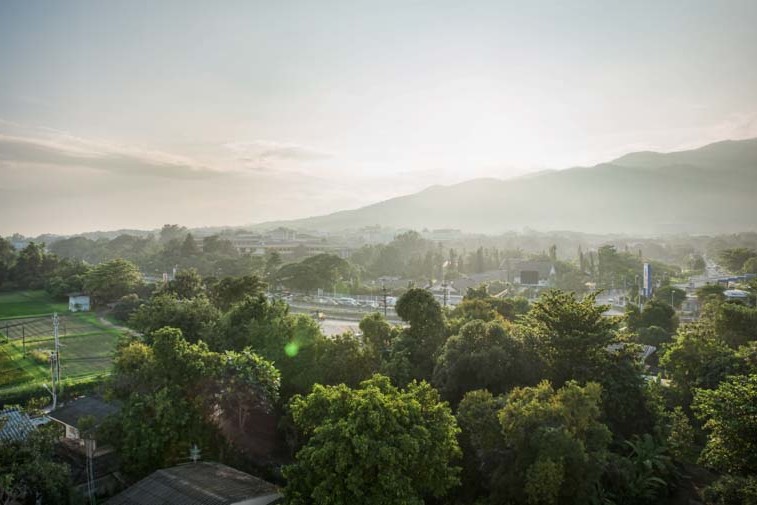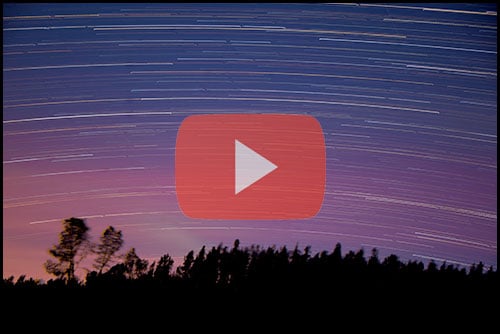As I plunged my tripod into muddy, shin-deep lakewater, my flashlight illuminated the world’s oldest teakwood bridge.
It was an hour before sunrise and I standing alongside the U Bein Bridge in Myanmar, Burma.
My dream was to create a long exposure photo that included the bridge and the starry night above.
Turns out, I should have arrived earlier.
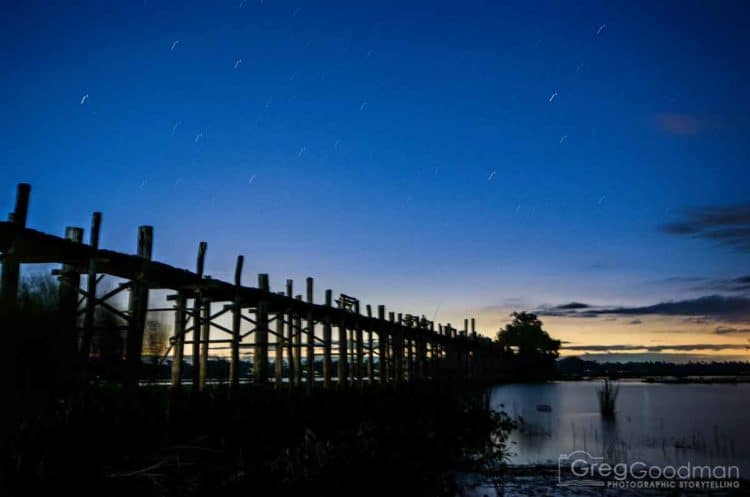
Photographing the U Bein Bridge in Myanmar (Burma)
First, it took me a while to find the best place to set up my shot.
Then, each time I adjusted my camera, the subtle movement sank one of the tripod legs further into the mud – changing my angle. Fortunately, I was using my heavy wide angle lens, which gave me plenty of room to crop later.
What I didn’t count on how the lens’ weight would make the camera sink during the three minute exposure.
Or, that the single exposure would be my only chance to get the bridge and the stars. As you can see above, the bridge came out a little blurry. By the time I set everything up for another take, the sun had risen enough to obscure the sky.
Alas …
Alak …
Oh well!
No time to dwell … there was plenty more to photograph before the sun actually rose over the horizon.

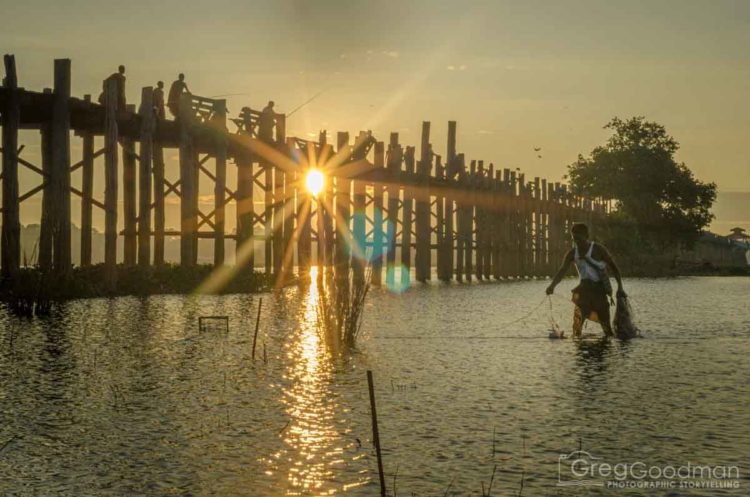

What is the U Bein Bridge?
Myanmar’s U Bein Bridge is a crossing that spans the Taungthaman Lake near Amarapura. The 1.2-kilometre (0.75 mi) bridge was built around 1850 and is believed to be the oldest and (once) longest teakwood bridge in the world.
Construction began when the capital of Ava Kingdom moved to Amarapura, and the bridge is named after the mayor who had it built. It is used as an important passageway for the local people and has also become a tourist attraction and therefore a significant source of income for souvenir sellers.
The bridge was built from wood reclaimed from the former royal palace in Inwa. It is particularly busy during July and August when the lake is at its highest.
U Bein Bridge features 1,086 pillars that stretch out of the water, some of which have been replaced with concrete.
Though the bridge largely remains intact, there are fears that an increasing number of the pillars are becoming dangerously decayed.
Some have become entirely detached from their bases and only remain in place because of the lateral bars holding them together. Damage to these supports has been caused by flooding as well as a fish breeding program introduced into the lake which has caused the water to become stagnant.[1]
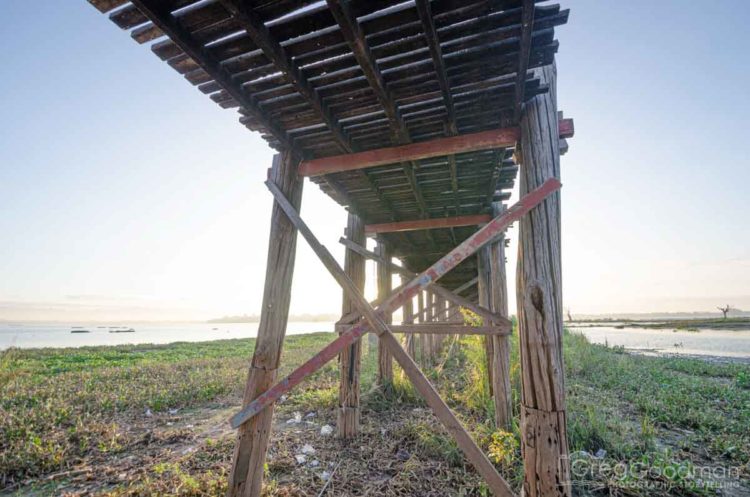
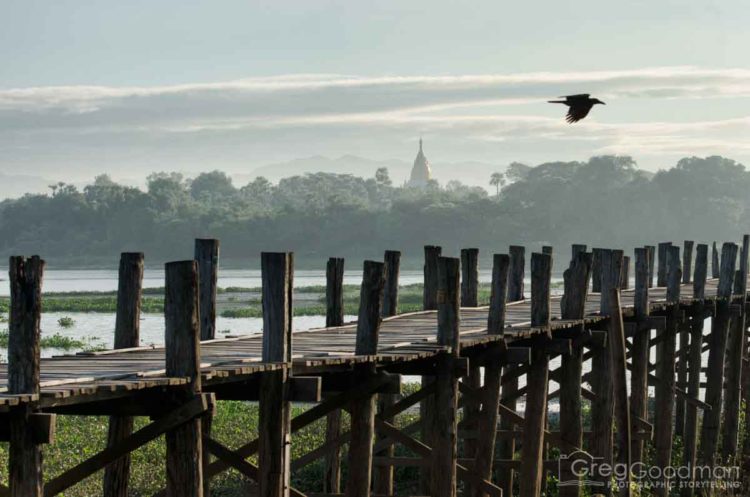
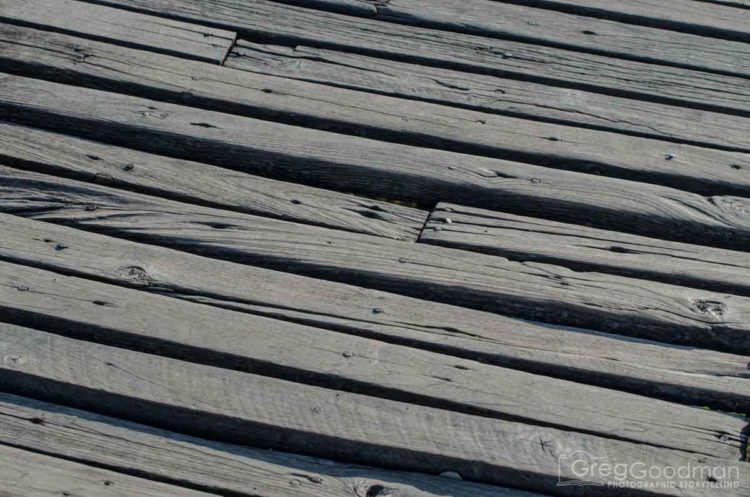
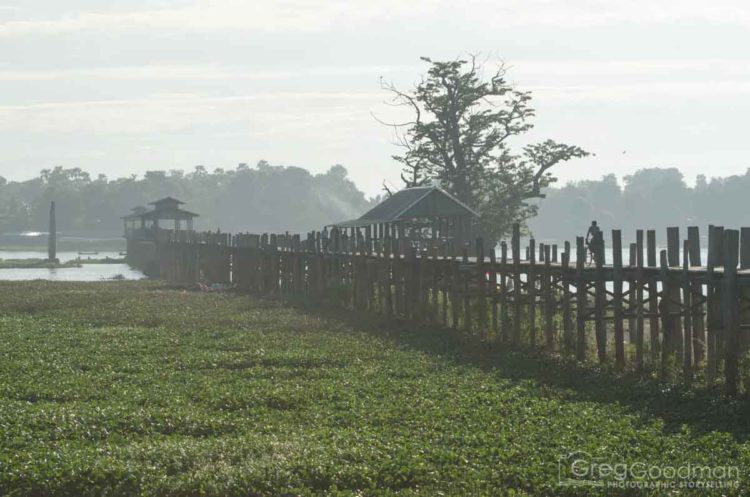

Virtually visiting the U Bein Bridge — 8 years later
All I wanted to do was find the sunrise startrail photo for an Instagram post.
It should have taken me 5 minutes …
Two hours later, I completed an epic virtual trip through memory lane. Turns out, I had 250 photos in my archives from that morning. Most of them had gone untouched since they left my camera’s memory card in 2013.
As I edited my favorite shots, I was instantly transported across the world and back in time … standing in the Myanmar mud and waiting for the perfect photographic moment.

Hearing the sounds of monks chanting in unison as the sun peeked out from behind the mountains.
Watching scores of tourists point their cameras at the monks’ flowing red robes …and doing the same thing myself later.
Chuckling when those same modern monks pulled out their own cameras and cell phones to chronicle their visit.

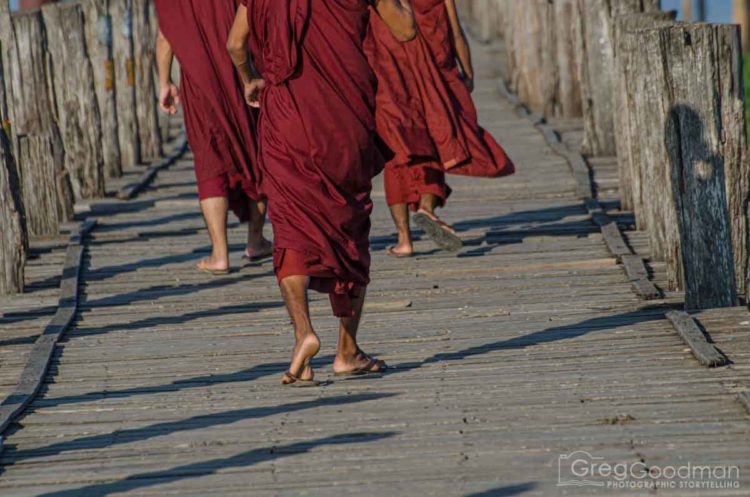
Feeling the bridge buckle and creak as you walk across it.


Quickly hopping out of the way as a bicyclist wizzes past you – lightly blowing your pants in their wake.

Offering the lone beggar 50,000 kip as her first charity of the day.
Squatting down to find the perfect angle where the morning sun peeks through the beams that hold up the bridge.

Stopping at the covered wooden benches along the way to have a sip of water and check your camera.


Smelling wood burning as the first catches of the day are gutted and placed on the grills that line the shores.
Watching vendors planting rainbow umbrellas in the mud and setting up shop for the day.
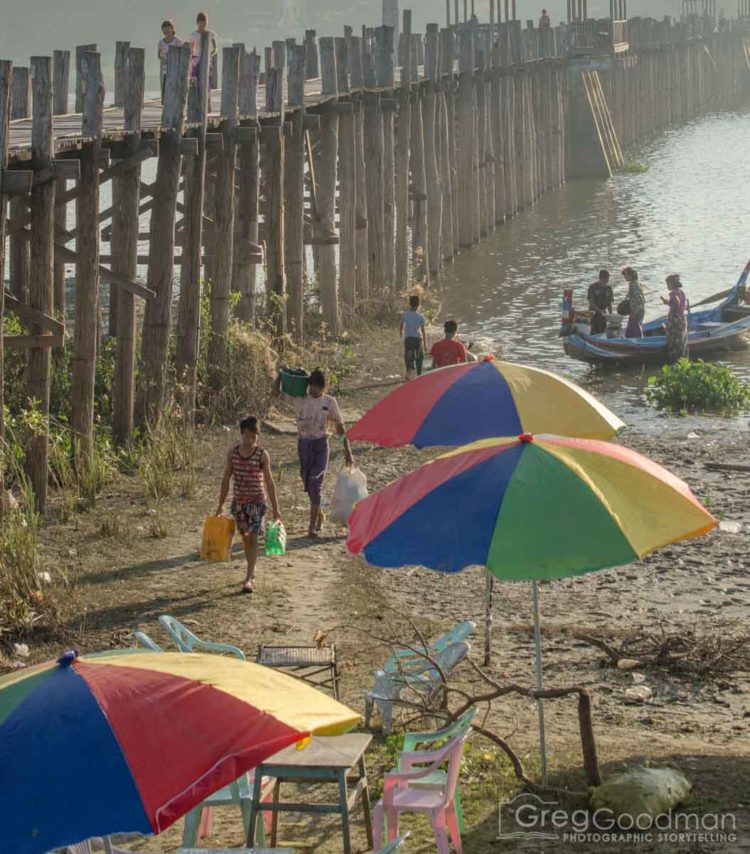
Marveling at the ecosystem of fishermen, hawkers, vendors, and people carrying baskets of unknown stuff back and forth.



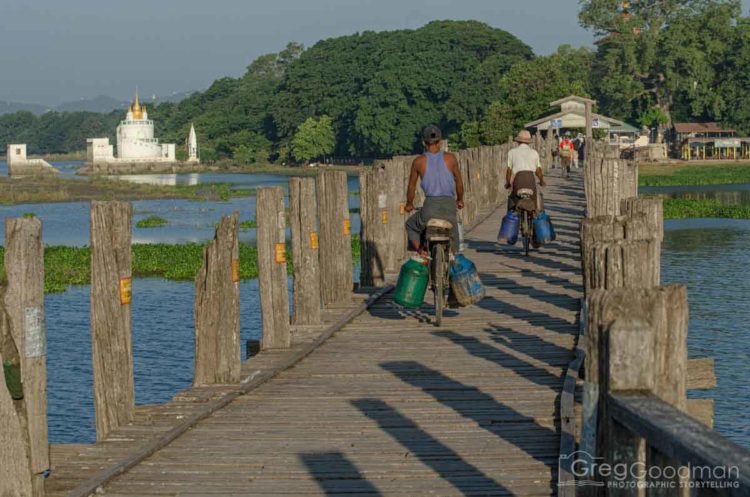
Gazing out at the beautiful scenery that surrounds Myanmar’s U Bein Bridge

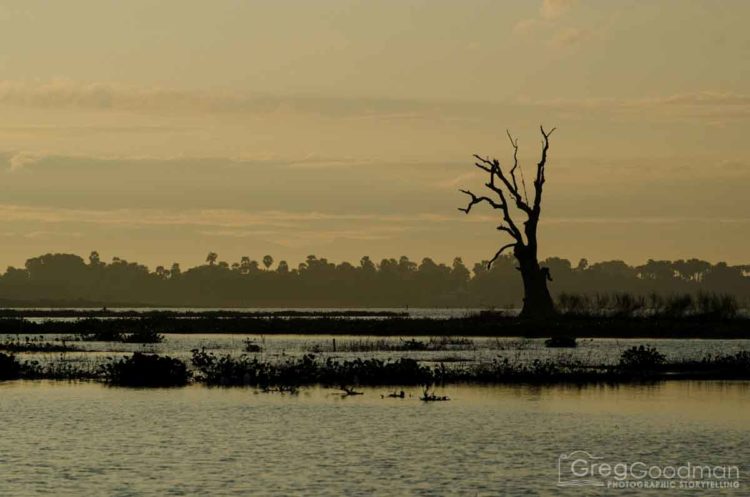

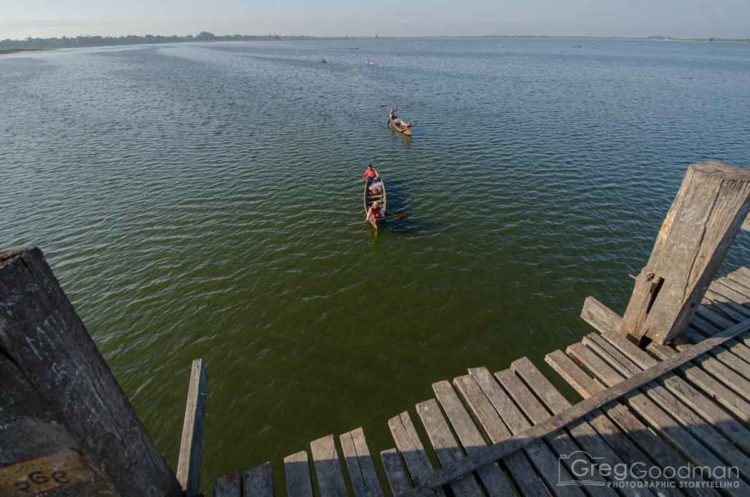
Reaching the end of the bridge and immediatly turning back around to find my waiting taxi driver.
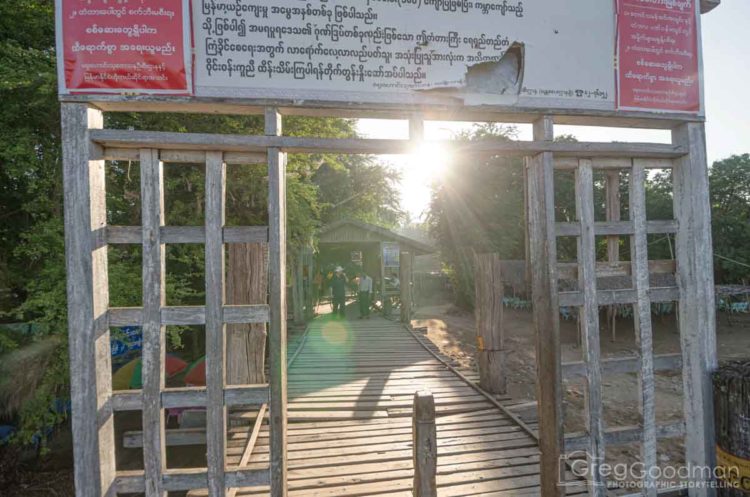
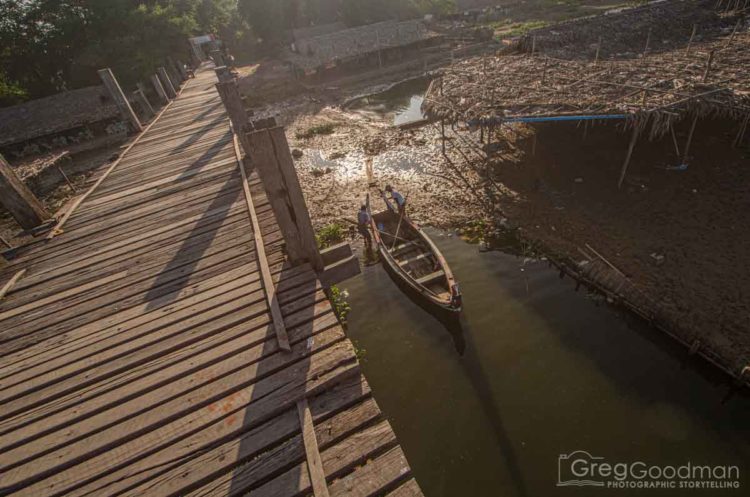
Marveling at how an entire world of tourism had woken up outside the entrance to U Bein Bridge.

This was the scene at 8am when I left.
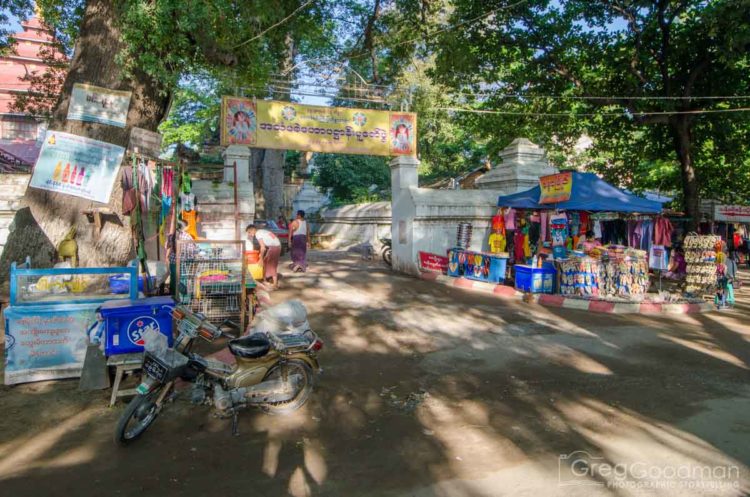
The best way to visit U Bein Bridge in Myanmar (Burma)
Whenever you can, book a private taxi.
While it’s more expensive than an organized tour, you can explore the bridge at your own pace.
As I stood there in the mud, I watched as busloads of tourists pulled up at sunrise.
Scores of people walked onto the bridge, explored a few hundred yards, snapped a few photos, and left.
They were gone before the sun’s glorious rays first peeked out from above the distant mountains.
They missed the beauty of the Golden Hour – and never had a chance to see the bridge truly come alive.
After they left, I was pretty much the only foreigner on the bridge for most of my three hours there.
And that, my friends, was a gift that I am still grateful for today.
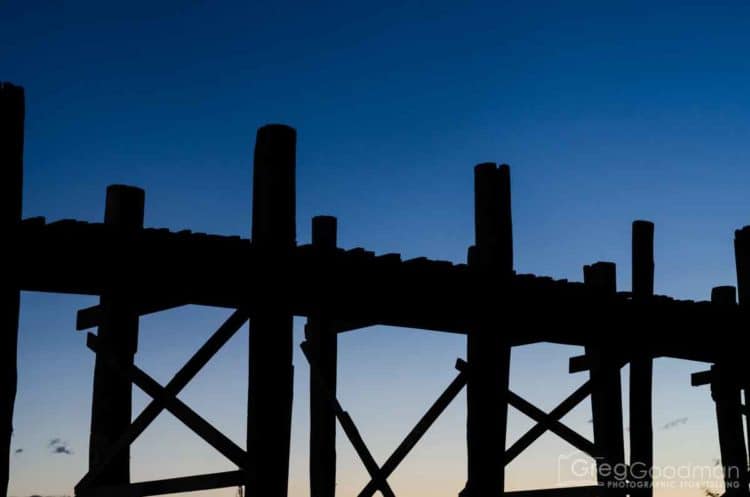
EXPLORE SOMEWHERE NEW
BUY A PRINT
All photos on this site are available as limited edition fine art photographic prints. Please get in touch for sizes and rates.


